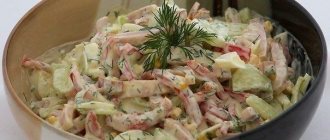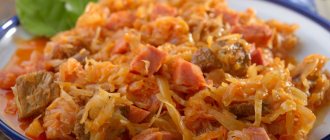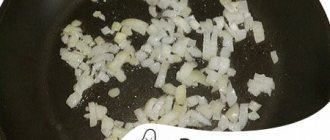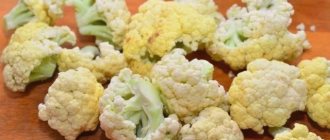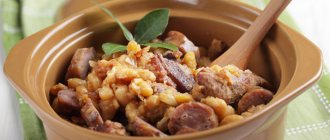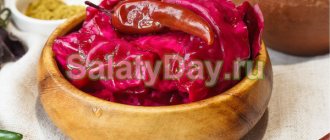Many dishes in our traditional Russian cuisine cannot do without the familiar white cabbage. Borscht, cabbage soup, cabbage soup, cabbage are stewed, fermented, wrapped in dumplings, and made into salads. In general, not a single feast is complete without it. An unpretentious plant, which is also well stored all winter, conquered our ancestors and now it has entered our daily life firmly and for a long time. However, if there are no problems with the spelling of the name of a vegetable, then its unit of measurement is a head of cabbage or a head of cabbage; how to write it correctly is difficult to figure out, so we will resort to the rules of the Russian language and a spelling dictionary
Which rule applies
According to the norms of the Russian language, we must check unstressed vowels in root morphemes with stress. When we start looking for a test word for the noun “head of cabbage”. Then we will make sure that in no form the stress can shift to the syllable we need. According to this, we can understand that the noun we are checking is a dictionary noun and the only correct way to check is a spelling dictionary. According to it, we can see that the lexeme “kochan” is used only through the letter “o”.
Example sentences
- We were able to buy a huge head of cabbage at the market; today we will have borscht for dinner.
- Having planted the entire field with white cabbage, the farmer was right – this year’s harvest turned out to be excellent.
- A head of cabbage was cut into three parts - for borscht, for dumplings and for stewing with mushrooms.
How to write incorrectly
It would be incorrect to spell a noun with two letters “a” – “kachan”.
What do we know about cabbage?
- VK
- Youtube
Most of the population of our country knows only white cabbage, however, many other types of cabbage have been bred in the world and six more are grown in Ukraine: red cabbage, cauliflower (curly), Savoy, kohlrabi, broccoli (asparagus), Brussels sprouts. They are all different in shape, chemical composition, and it is unknown which of them should be recognized as the “queen of vegetables,” as white cabbage is now often called.
White cabbage.
It is valued for the fact that it contains ascorbic acid at all times of the year (especially late varieties). Despite the fact that the acid is lost during storage, even after six months its content is 50 mg per 100 g of weight. Vitamin C is perfectly preserved in sauerkraut and frozen cabbage. In addition, cabbage provides our body with vitamins B1, B2, B6, K, PP, as well as vitamin U, which is called anti-ulcer. Cabbage also contains essential minerals (potassium, calcium, phosphorus, iron, iodine, etc.). White cabbage strengthens the body, strengthens the immune system, has a calming effect on the nervous system, relieves headaches, and treats insomnia. Cabbage juice has a special meaning. Cabbage is very useful for people with kidney and heart diseases.
Recipe for sauerkraut from Transcarpathia.
For 10 kg of peeled cabbage you need 200-250 g of salt. Add grated carrots (200-250g), finely chopped apples (usually Antonovka (500-700g), cumin, dill or pepper seeds (5g each). You can add bay leaf (2-3g).
Peel the cabbage, cut out the stalk and chop. Mix with carrots and other ingredients, place everything in a barrel or large pan, sprinkle evenly with salt and press well. Place a layer of washed green cabbage leaves on top, then cheesecloth, a wooden circle on the gauze, and something heavy on the circle. The weight of the load should not exceed 10% of the weight of the cabbage. Fermentation occurs at 18-22C and can last up to 10-12 days. During fermentation, foam forms, which must be removed from time to time. Cabbage is considered ready when bubbles no longer form on the surface of the brine, and the brine itself becomes transparent. Sauerkraut must be stored in a cool place, the optimal temperature is 0 C.
You can also make sauerkraut with honey. The difference is that before laying the cabbage, the walls of the barrel or pan must be greased with honey, and pieces of simple black bread, cut 1.5 cm thick, must be placed on the bottom. Such cabbage will be ready in three days. Good luck!
Red cabbage.
The head of this cabbage is denser than that of white cabbage, and the leaves are thicker. However, it surpasses its white cabbage in vitamins, mineral salts, and organic acids. Has remarkable bactericidal properties.
Red cabbage makes wonderful salads, vinaigrettes, it can be pickled, it can be stewed, but not boiled. If you add red cabbage when fermenting white cabbage, the final product will be significantly enriched with vitamin C.
Savoy cabbage.
Savoy cabbage differs from white cabbage in having wrinkled, corrugated leaves and a less dense head. It tastes like cauliflower, is unusually tasty in salads, is suitable as a side dish for meat and fish dishes, and is more suitable for cabbage rolls. It can be used for preparing first and second courses, but it should not be salted or preserved.
It should be noted that in terms of protein content, Savoy cabbage dominates over white cabbage by 2 times; it is also rich in mineral salts, in particular phosphorus, potassium, magnesium, sulfur, and has a versatile healing effect: it has a calming effect on the nervous system, reduces dependence on weather factors, and strengthens hair , nails, teeth, prevents anemia.
Cauliflower.
Cauliflower is rich in pectin, malic and citric acid.
It contains a little cellulose, which has a more delicate structure and is easier to digest without causing increased fermentation in the intestines.
Cauliflower contains vitamin A, B vitamins, nicotinic acid, vitamin C (on average 70 mg%), pantothenic acid, vitamin K, folic acid.
The mineral composition of this cabbage is also quite diverse: sodium, potassium, magnesium, iron, copper, phosphorus, sulfur and chlorine.
In cooking, it is recommended to cook this cabbage in a small amount of water, since the water in which the cabbage is cooked draws out some of its mineral and other water-soluble components, and use the broth to make soup or sauce.
Brussels sprouts.
Heads of cabbage formed from small, tender leaves shaped like a regular head of cabbage are used for food. They taste great and are used to prepare various dishes.
Brussels sprouts contain between 152 and 247 mg% vitamin C depending on growing conditions, and the amount does not decrease during storage. If we remember that red sweet pepper contains 160 mg%, and lemon 50 mg% of vitamin C, we can see how important Brussels sprouts are as a rich source of vitamin C, which makes it a valuable food product that is necessary for strengthening the human body, to increase its resistance against colds and infectious diseases.
Brussels sprouts also contain vitamins B2, PP, carotene, as well as about 1.5% mineral salts, most of which are potassium, and they contain two to three times more proteins, vitamin C, amino acids and mineral salts than cabbage cabbage
It is better to store heads of Brussels sprouts on a common stem - this way they are better preserved. When preparing a dish from this cabbage, you do not need to cut off the heads of cabbage very close to the base, as they easily fall apart, the leaves tear, and the dish takes on an unpleasant appearance. They also need to be stewed carefully so that the cobs do not fall apart - they should be hard and dense.
When cooked, Brussels sprouts expand in volume, while all other types of cabbage reduce their volume by about 20%.
Broccoli.
100 g of broccoli contains only 25 kcal.
This cabbage contains fiber, potassium, phosphorus, calcium, magnesium, iron, zinc, manganese, sulfur, vitamins C, B1, B2, B5, B6, PP, E, K, provitamin A.
Regular consumption of broccoli is an excellent weapon against stress.
This cabbage contains a huge amount of vitamins and minerals, especially potassium, folic acid, iron, beta-carotene and sulfur compounds, which makes it a vitamin-mineral bomb. Broccoli mobilizes our immunity, helps prevent infections, anemia, tumors, liver diseases, and also slows down the aging process!
Broccoli contains sulforaphane, a compound that can slow down the development of breast tumors. Sulforaphane blocks the division of cancer cells and prevents the further development of the disease.
Chinese cabbage.
Chinese cabbage has become a popular salad ingredient. It tastes like white cabbage. In addition, Chinese cabbage has dietary and medicinal properties, especially useful for cardiovascular diseases and stomach ulcers.
Chinese cabbage is considered a source of longevity because it contains amino acids that are essential for the human body; they dissolve foreign proteins, cleanse the blood of harmful microbes and viruses, and increase the body's resistance to disease.
Beijing cabbage differs from other varieties of cabbage in the absence of a head, which makes it similar to lettuce. Another advantage is the ability to maintain taste throughout the winter. It is used fresh and can be used to prepare first courses. True, it boils quickly, so you need to cook it for no more than 10 minutes.
Regarding the preparation of salads, Chinese cabbage is delicious with butter, mayonnaise or various sauces. You can add canned corn, crab sticks, and croutons to it. In a word, fantasize and try new tastes.
Try cooking:
The original Caesar.
Half of Chinese cabbage, two croutons of white bread, 100 g of walnuts, 200 g of hard cheese, 2 cloves of garlic, olive oil, lemon juice, soy sauce, herbs.
Either tear the cabbage leaves with your hands or chop them quite coarsely. Place them in a salad bowl grated with garlic. Prepare a mixture of olive oil, lemon juice and soy sauce, mix it all well. Pour the mixture evenly over the cabbage (it’s best not to stir) and sprinkle grated cheese on top. Prepare croutons, preferably in a toaster, rub them on all sides with garlic, cut into cubes. Place the croutons on the salad, top with cheese again, and then chopped walnuts and herbs. Do not stir the salad. It is convenient to place it on plates with two spoons.
Bon appetit!
Date of publication: January 25, 2010
126329
Olga Osharovskaya
If you notice an error, select the required text and press Ctrl+Enter to report it to the editors
Comments:
There are no comments yet, you can add your own comment. For this you need to register or log in.
Authorization
You have entered an incorrect login/password
adding a comment
The process of growing Romanesco cabbage in a personal plot
The process of cultivating this vegetable crop captures the attention of any vegetable grower. Growing Romanesco cabbage at home begins with planting seedlings. Then, when they are quite old, the seedlings are planted on their own plot.
The most important factor in agricultural technology is the provision of light, well-structured soil, richly seasoned with organic fertilizers. It is necessary to mulch the entire surface of the soil in the garden bed.
Planting of seedlings is carried out as early as possible. It could be early March. Shallow boxes are used for sowing. The soil is ordinary turf mixed with sand and compost. The soil should be well disinfected using a hot solution of potassium permanganate and calcination in the oven. The seeds are soaked in a weak solution of potassium permanganate for 30 minutes. All water that floats to the surface should be removed - it is not germinating. Then the seeds are laid out on the surface of the soil and sprinkled with a 0.5 cm layer of earth on top. The container is covered with plastic wrap and moved to a warm place. Romanesco cabbage shoots appear after 5-7 days. You need to immediately move the seedlings to a bright and cool place.
Until the inflorescences are set, the ambient temperature should not be allowed to rise above 18 degrees Celsius. This is the most important condition for tying heads.
The most important agrotechnical measure when growing cabbage seedlings of this species is the fight against “blackleg”. This is a fungal disease. The following methods will help you avoid it:
- watering with a solution of any fungicide once a week, for example “Fitosporin-M”;
- sprinkling the entire surface of the soil with fine wood ash;
- limiting watering until the top layer of soil dries;
- good lighting, use a phytolamp if possible;
- regular ventilation;
- Avoid dense crops.
At the age of 15 days from the moment of emergence or when two true leaves appear, the process of picking into separate containers begins. For these purposes, you can use cups of sour cream and other products with a volume of 250 - 300 ml. Special peat pots are also suitable. They are covered with soil prepared and calcined in the oven. A mixture of turf soil, sand and humus is used. The seedlings are carefully removed from the container using a sharpened teaspoon, preserving the root system. Then you need to carefully trim the central root. When planting, deepen to the cotyledon leaves. Water and temporarily cover the containers with separate plastic bags or glass jars. This shelter can be removed after 5 days.
"Sonya F1"
A hybrid of medium-late ripening, universal use, has proven itself well in processing and short-term storage. High-yielding variety, resistant to diseases and cracking.
The upper leaves are colored grayish-green; when cut, the head of cabbage is white, juicy with excellent taste. The medium-sized heads are dense, weighing 4-5 kg. It is not afraid of transportation and retains its presentation for a long period.
Harvesting occurs on the 115-120th day from the day the plant is planted with seedlings.


